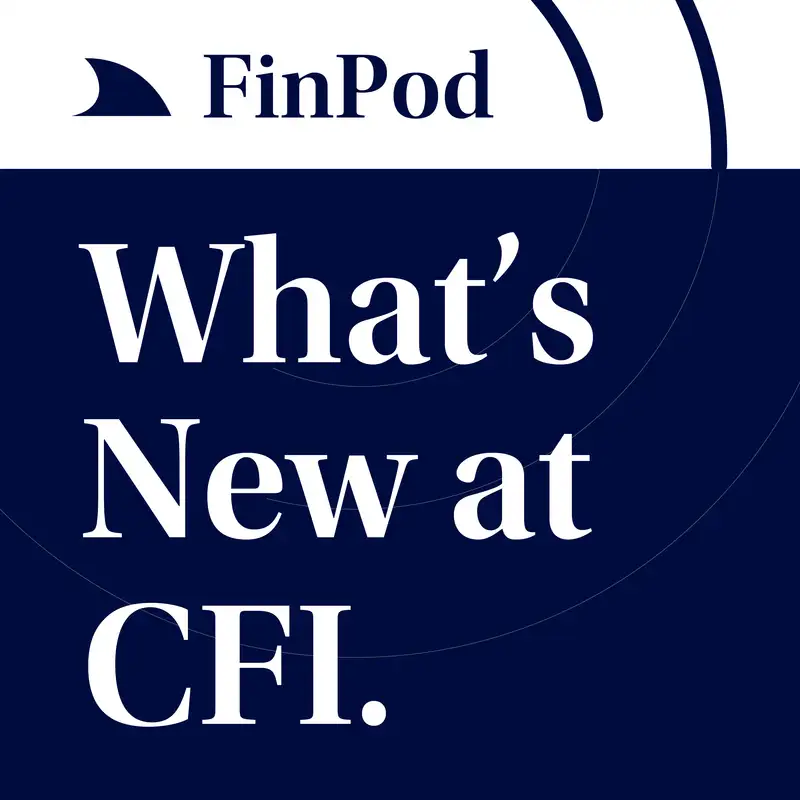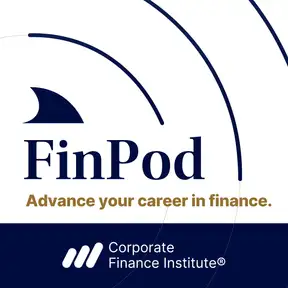What's New at CFI | FP&A 3-Statement Modeling
Meeyeon (00:14)
Hi everyone and welcome back to another episode of What's New at CFI. Today I'm joined by my wonderful colleague Duncan McKeen who everyone is probably very familiar with. He's one of my personal favorite instructors. And it's funny I could say welcome but it's very strange because I see you all the time.
Duncan McKeen (00:32)
Totally. Thank you, Meeyeon. That's very kind.
Meeyeon (00:35)
So today we are talking about, we're three statement modeling, but we're talking about it from the perspective of FP&A We're talking about one of our latest courses, FP&A Professional, three statement modeling. Now three statement modeling is probably one of the skills that I think bring the most students and learners to CFI. I think between just generally learning about investment banking,
DCF modeling, LBO modeling, three statement financial modeling. Those are the key drivers, I think, of foot traffic of new users to the website. But let's talk about what we're doing differently in this course today.
Duncan McKeen (01:19)
Yeah. well, yeah, I think you definitely that's true statement. It drives a lot of traffic and, I think it makes sense that it drives traffic just because three statement model, three statement modeling. And this is something you would probably agree with me on is that it's something that just tons of people struggle with for sure. They either have built a model themselves and it doesn't quite balance or, they've opened a model that's already been built. It's on the drive somewhere.
and maybe it doesn't balance when they open it. So it's really common for people to struggle with it. So that's why we thought it definitely should be something that should be in the core of the FP&A program, for sure. And yeah.
Meeyeon (02:07)
And so with the three statement modeling, have another course that is more directed to kind of like the investment banking career path. What are some highlights that you think are different that make the courses unique from each other? And should someone that's already taken the other one take this one as well?
Duncan McKeen (02:23)
Yeah.
Oh, so two great questions. Um, the first one about like what makes this one different is that it is the courses taught on a monthly FP and a model that forecasts out for 24 months. And so as you can imagine, you know, given that it's hard enough to understand and balance three statement models, it becomes even harder when you're dealing with a model where there's like, you know, 24 columns forecasting out into the future.
And then this model is also fairly complex and that is deep. Like there's a lot of rows. And so, that's, that's what makes it unique and different from the other three statement modeling courses that we've done. And then, I guess the other thing you asked about it was should somebody do both courses? Like if they've already done the other three, three statement course, I think that this particular course, part of the reason we're really proud of it, I think it does a really, really great job at.
teaching people like really deep, to really deeply understand how three statement models work. And one of the core things that we focus on is the relationship between the cashflow statement and the balance sheet. And you would know, of course, like if you add a certain line item onto, let's say you add like property, plant and equipment onto the balance sheet, well then you need to know what the corresponding line items are that should be on the cashflow statement.
namely like capex and depreciation in order to get things to balance. so we really focus on that relationship between those two statements. then, throughout the course, we're always encouraging the learners to like, make sure that if they put one line item onto one statement, make sure they put all the corresponding line items onto the other statement so that things are always balancing. Cause sometimes,
The reason that models won't balance is because they've added one line item into one statement, but they forgot to add it into the other statements. So it will never balance until they add that
Yeah.
Meeyeon (04:36)
And then just out
of curiosity, what is the industry of the company that we use in this course for the three statement model?
Duncan McKeen (04:46)
It's a great question. It is a consulting company. I don't know if we are specific on what services they were offering, but it's effectively a consulting company. And anyone that's been through, there's a series of seven courses in the FP &A program that already use a model which is very similar to this one. And what we did is we took that model from the seven courses and we just adapted it.
to add in a balance sheet and add in a number of different line items to make sure it would work as a three statement modeling course. one of the things that's really, really neat about this course is we're teaching
a really systematic procedure that people can use on three statement models that aren't balancing to make sure that they balance like every time. So we teach them to like zero out the starting, the starting period balance sheet. and, basically get it to a point where it's balanced and then add line items sequentially and bring it back to balance every single time they're adding sort of groups of line items.
into it. And I think it really forces people, people will come out of the course with like a really deep understanding of the relationship between cashflow statement and balance sheet. And I think they'll also come out of the course with a, know, a totally like well thought out procedure that they can use and apply to any three statement model that they're struggling with.
Meeyeon (06:21)
Yeah, because this is a skill that is so useful, not just whether you're an FP&A, but it is a repeated skill generally working in finance. If you're ever going to be doing any sort of financial modeling, whether you do it yourself or you're ordering someone else's model. But the reason why I asked about industry was because I think that's going to be a little preview for those listening is that I'm currently working on an economics for FP&A course. And I find that, especially when we learn about like three statement models or just
anything kind of like financial statement related. You also get the opportunity to also understand the industry at the same time that you're learning that skill. Oil and gas is a popular one to learn about, think. I'm not sure why, but like I find that a lot of people, especially kind of out of the university stream seem to be interested in oil and gas lately. it's, sometimes it's difficult to learn the industry.
because it doesn't have necessarily the most tangible products. So that adds a layer of, well, you could kind of see it as it's more of a challenge or another learning opportunity. So if you're interested particularly in learning about a specific industry and we happen to have that three statement model be a company that's related to that space that you're interested in, then you're also learning kind of like the operational, what's the right word for it?
Duncan McKeen (07:49)
Like the operational nuances of that sector, is that what you're going to say? Yeah.
Meeyeon (07:49)
You're the company. Yeah.
Yeah. Cause then you see like all the line items in their financial statements and you could kind of see the workings of the company.
Duncan McKeen (08:00)
Yeah, totally. And I will say for the people that are listening that this particular course is really it is taught on a modeling a company that's providing financial services or consulting services, but it literally could be any type of company. It really doesn't matter. Like you'll come out of it. You'll understand three statement modeling. You'll be able to apply that literally to any sector. There might be some slight differences in each sector.
But I would say that like 90 % of what's in this course would apply to any sector.
Meeyeon (08:33)
And then if there's any kind of final takeaways, anything that you want to share with everyone that's listening that they might learn from this course, any closing remarks before they dive in.
Duncan McKeen (08:43)
sure. Yeah, thanks, Meeyeon. Yeah, definitely. The other thing that we teach in this course is we will show everyone in the course how a balance sheet can be wired so that will always balance. Even if there's mistakes in the cash flow statement, in the balance sheet, it will always balance. But, you know, we sort of teach it with a warning that they should never under any circumstances do that.
It does feel great to have a balance sheet, which is always balanced. But the problem is, is that if you wire it up that way, you're essentially just overriding the natural error detection system that's, that's inherent in the statements. And you're effectively saying, I know there's an error, but I'm just ignoring it, which is definitely not the right way to do it. So we show, we show everyone how to do that essentially so that they can spot it. If it's already there in any models and remove it.
and wire it up properly. So that's something that I'm super happy is in the course so that, again, people can come away with much deeper understanding and know what to avoid with models that they encounter.
Meeyeon (09:56)
So if any, I'm gonna say that honestly, I think this is a course that I need to take because I remember the idea of having a three statement model balance was always so, it was a little bit elusive. It would always kind of require taking everything apart to build it back again from like step one and then checking and.
Duncan McKeen (10:11)
Mm-hmm.
Meeyeon (10:23)
for every like two steps I take to make sure that it balanced. But it's a skill that honestly, like even outside of three statement modeling, I think that everyone's going to take away a ton from and have it be something that they apply to any financial model. And so if you are looking for an opportunity to practice three statement modeling, always ensure that everything has got its balances and checks and the whole model balances. This is a great opportunity to learn that skill. So
If that's what you're looking for, we hope you enjoy this course. But for now, we're going to say, see you later And that's been that for what's new at CFI today.
Duncan McKeen (11:03)
Bye everybody. Thanks, Meeyeon

